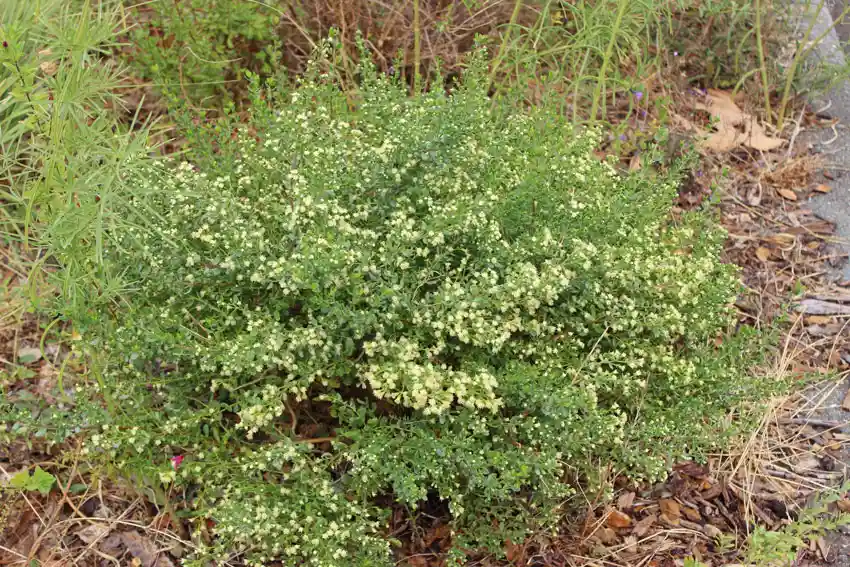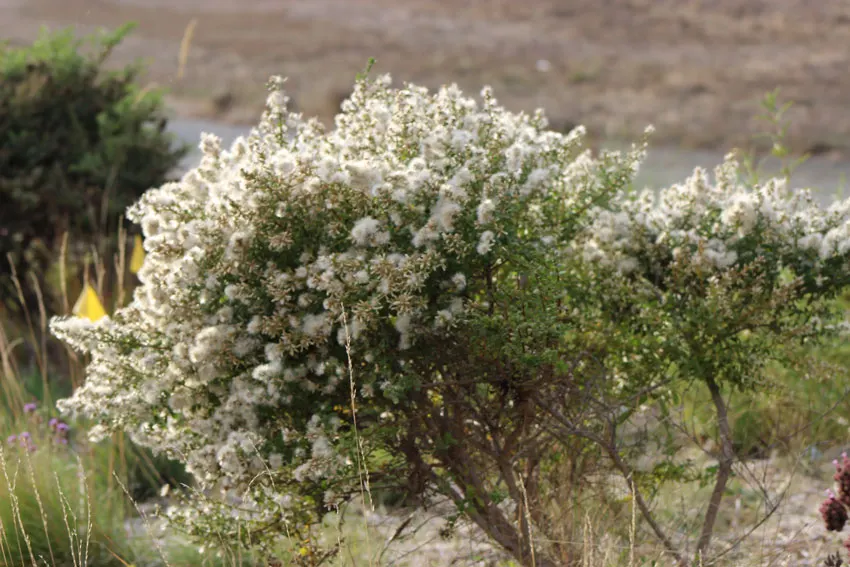Coyote Brush – Baccharis pilularus
An overlooked and sometimes maligned shrub due to its invasive nature is the Coyote Brush. It is found in large numbers all around the island. These shrubs are “volunteers” planted by nature from seeds of the existing shrubs in the adjacent open space. This beneficial plant provides an enormous amount of forage for birds, insects, and other pollinators. It has been written that approximately 221 insects and 257 arthropod species are dependent on the plant. While it is the objective for some not to attract insects to a garden, it is important to know that insects are the main food source for many songbirds, hummingbirds, bats, reptiles, amphibians, and fish. Finches and sparrows are among the many birds that consume Coyote Brush seeds. It also provides habitat for brush rabbits, Wrentits, and rain beetles. Other plants, animals, and fungi utilize it for shelter, feed on its shoots and roots, and the duff from its decaying leaves and branches. So, as a survivor, Coyote Brush helps other native plants survive.
It is extremely hardy and drought-tolerant in many conditions, forming a wide, evergreen, billowy mat which grows 1-2 feet tall and 3 feet wide. If allowed, it can take over a site, creating a monoculture due to the bounty of seeds it produces. However, it will respond to aesthetic pruning and may be shaped into an attractive, gnarly bonsai-like shrub as it ages. If pruned vigorously, it will stump sprout.
At one time, we created a 10-foot-wide hedgerow favored by nesting birds and resident quail who loved to scratch for insects while taking cover underneath the thick brush. Birds also built their nests inside the hedge.
A fascinating fact about this shrub is how it reproduces, blooming in September and October, the driest time of the year. When in bloom, it resembles a large, white, fluffball. Their deep roots
give them the ability to find water 9 feet deep in the soil. According to Andrew Wright, a master’s student in 1928 at UC Berkeley, after digging up a few plants, he found the roots traveled deeper than nine feet. This while the above-ground plant was barely three feet tall. He also found that the plant maintains a shallow network of roots, allowing them to utilize summer coastal fog for additional moisture. One other interesting feature of Coyote Brush is that it loses water at a rapid rate from Spring through Fall, culminating in the voluminous supply of white, fuzzy flowers. The less water it has, the more it uses until the winter rains begin.
Coyote Brush can be a staple or anchor plant in any garden for its hardiness and habitat value, floral display, and year-round green appearance.


